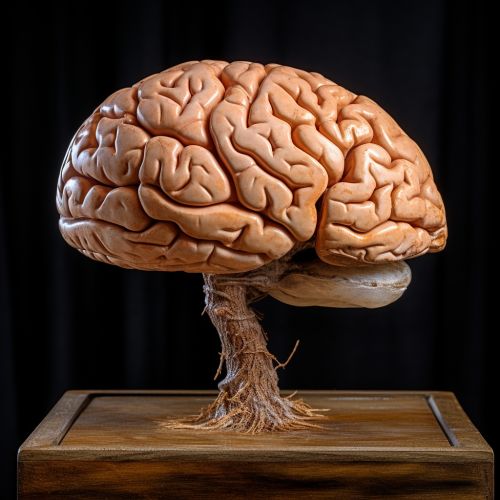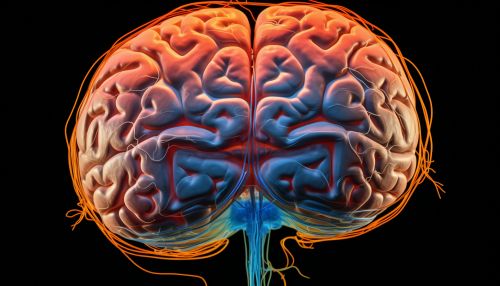Angular gyrus
Overview
The Angular gyrus is a region of the brain in the parietal lobe, that lies near the superior edge of the temporal lobe, and immediately posterior to the supramarginal gyrus. It is involved in a number of processes related to language, number processing and spatial cognition, memory retrieval, attention, and theory of mind. It is Brodmann area 39 of the human brain.
Anatomy
The angular gyrus is located in the posterior part of the brain, near where the parietal, temporal, and occipital lobes converge. It is part of the Brodmann area 39 and is bounded by the superior temporal sulcus, the inferior parietal sulcus, and the anterior occipital sulcus. It is surrounded by several important structures, including the supramarginal gyrus anteriorly, the occipital lobe posteriorly, and the temporal lobe inferiorly.


Function
The angular gyrus has been implicated in a wide range of cognitive functions. These include:
- Language processing: The angular gyrus is thought to be involved in various aspects of language processing. It has been associated with the ability to read and write, and with the comprehension of metaphors and other complex linguistic constructs.
- Number processing: The angular gyrus plays a crucial role in numerical cognition, including numerical estimation, exact calculation, and the comprehension of mathematical symbols.
- Spatial cognition: The angular gyrus is involved in spatial cognition, including the perception of one's own body and its position in space.
- Memory retrieval: The angular gyrus is implicated in episodic memory retrieval, including the recollection of autobiographical events.
- Attention: The angular gyrus is involved in the modulation of attention, particularly in the shifting of attention between different stimuli.
- Theory of mind: The angular gyrus plays a role in theory of mind, the ability to understand and predict the mental states of others.
Clinical significance
Damage to the angular gyrus can result in a number of neurological and psychiatric conditions. These include:
- Gerstmann syndrome: This is a neurological disorder that results from damage to the angular gyrus. It is characterized by a cluster of symptoms, including difficulties with writing (agraphia), difficulties with arithmetic (acalculia), confusion between left and right, and finger agnosia (inability to distinguish the fingers on the hand).
- Alexia and Agraphia: Damage to the angular gyrus can result in difficulties with reading and writing. This can range from mild difficulties to complete inability to read or write.
- Balint's syndrome: This is a rare neurological disorder that results from damage to various parts of the brain, including the angular gyrus. It is characterized by difficulties with visual attention and spatial awareness.
- Autism and schizophrenia: Some studies have suggested that abnormalities in the angular gyrus may be involved in the pathophysiology of autism and schizophrenia, although the exact role of this brain region in these conditions is still not fully understood.
Research
Research into the angular gyrus is ongoing, with many aspects of its function and involvement in disease still not fully understood. Current research topics include its role in language processing, numerical cognition, spatial cognition, memory retrieval, attention, and theory of mind, as well as its involvement in conditions such as Gerstmann syndrome, alexia and agraphia, Balint's syndrome, autism, and schizophrenia.
See Also
- Parietal lobe - Temporal lobe - Occipital lobe - Brodmann area - Gerstmann syndrome - Alexia - Agraphia - Balint's syndrome - Autism - Schizophrenia
